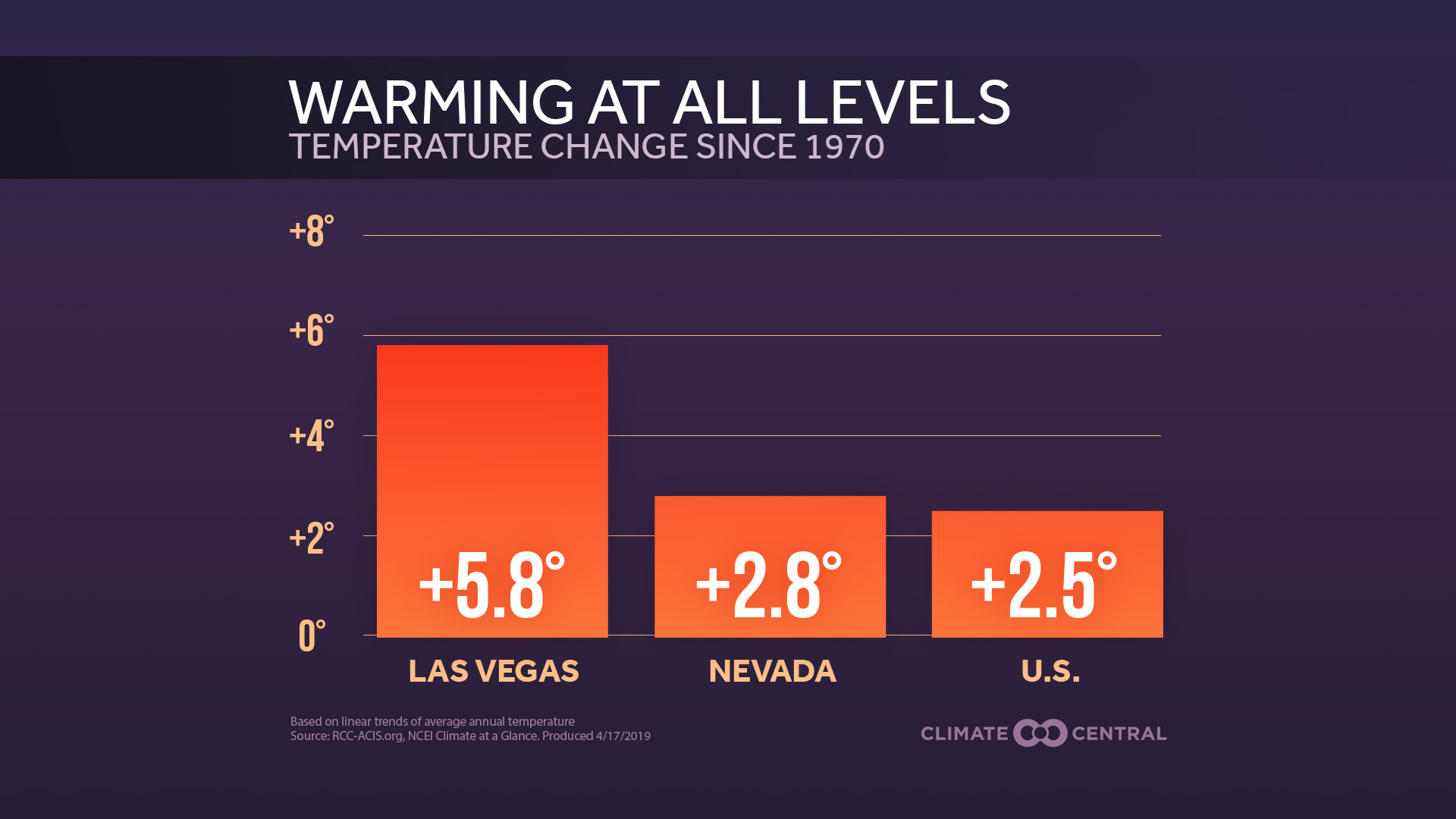Earth Day is the largest civic observance in the world, with more than 1 billion engaged annually in environmental activities. As humanity’s carbon dioxide emissions continue to rise, pushing atmospheric concentrations to the highest level in at least three million years, climate change has become a key part of Earth Day awareness.
This year, a new Climate Central report highlights the fastest-warming cities and states since the first Earth Day — showing that global warming is here and now. Since Earth Day began in 1970, temperatures have risen in almost 98 percent of the 242 cities analyzed. Las Vegas leads the list with a 5.8°F increase, and nine other cities have warmed 4°F or more. As for states, temperatures have risen at least 1.8°F in all U.S. states measured, with a national average increase of 2.5°F.
Alaska is the fastest-warming state by far, as the Arctic is warming twice as quickly as the rest of the world. And what happens in the Arctic, doesn’t stay in the Arctic. Melting glaciers are fueling sea level rise and permafrost thaws are releasing more heat-trapping gases. According to a recent UN report, winter temperatures over the Arctic Ocean could rise 5-9°F by midcentury unless the world’s emissions reduction commitments are strengthened. Alaska’s March was a foreboding sign, with temperatures a stunning 15.9°F above normal.
The Southwestern U.S. is another hotspot of warming: New Mexico and Arizona come next in our state rankings, and four Southwestern cities lead the table of cities below. The region is especially vulnerable to droughts and heat extremes — dangers that are expected to worsen with climate change.
Warming is the foundation for the wide range of climate impacts that we experience in communities around the world. It’s increasing the frequency and intensity of extreme weather, harming health, stressing food and water supplies, shifting seasons and ecosystems, rising sea levels, damaging infrastructure and economies, and threatening ways of life. Curbing these hazards may be the greatest challenge of our time, but mitigating solutions exist from renewable energy to cleaner and agriculture. Talking about climate change can help, too.
Additional resources:
Our new report: American Warming: How the U.S. Has Heated Up Since the First Earth Day
Data for the complete rankings by state and city
Our toolkits that explain extreme weather and climate change
The Fourth National Climate Assessment, for climate impacts by region
Earth Day activities to engage your audience
Methodology: Temperature change is based on a mathematical linear trend line derived from the annual average temperature. State and national data compiled from NCEI Climate at a Glance. Individual station data compiled from the Applied Climate Information System. Trends begin in 1970 for consistency between all stations in the analysis. Reno, Nevada was excluded from ranked tables because of data inconsistencies unique to that city's weather station.
